What Is a Rug Pull in Cryptocurrency? How Scammers Drain Your Funds and How to Avoid Them
Rug Pull Risk Calculator
Token Safety Assessment
Enter key parameters to evaluate rug pull risk using industry data from 2022-2023. Based on article: "What Is a Rug Pull in Cryptocurrency? How Scammers Drain Your Funds and How to Avoid Them".
Risk Assessment Result
Imagine putting your money into a new cryptocurrency that’s trending on Twitter, promised 10x returns, and backed by a team with zero public names. Then, one day, the app crashes, the token price crashes harder, and you can’t sell anything. Your investment? Gone. That’s a rug pull.
It’s not a glitch. It’s not bad luck. It’s a planned theft - and it’s happening all the time. In 2022 alone, rug pulls stole over $2.8 billion from crypto investors. That’s more than the combined losses from FTX, Celsius, and Voyager. And the worst part? Most victims had no idea they were walking into a trap until it was too late.
How a Rug Pull Actually Works
A rug pull isn’t just a scam. It’s a carefully timed exit strategy. Developers create a new token - often on decentralized exchanges like Uniswap or PancakeSwap - and make it look real. They build a website, post fake team photos, hire influencers to shout about it on Telegram and TikTok, and even list it on small crypto trackers. Then they do something smarter: they lock liquidity. Or so they say.
Here’s the trick: liquidity is the money in the trading pool that lets you buy and sell the token. If it’s locked, you think your money is safe. But in 91% of rug pulls, that lock is either fake or expires within 72 hours. Once the token price spikes from hype, the developers drain the liquidity pool, sell their own massive holdings, and vanish. The token becomes worthless. The community is left with nothing.
There are two main types:
- Hard rug pulls - The code is rigged from day one. Smart contracts are built to prevent you from selling (called a honeypot), or let the devs mint unlimited new tokens to crash the price. The $SQUID token in 2021 was a textbook example - it had a hidden function that blocked sells but allowed the team to dump 99% of their holdings.
- Soft rug pulls - No code manipulation. Just pure deception. The team promotes the token, pumps it with fake volume and coordinated buying, then quietly dumps their coins when the price peaks. No hack. No exploit. Just a well-timed lie.
According to Coinbase’s 2023 data, 68% of rug pulls use malicious code. The rest? Pure psychology. They count on FOMO - fear of missing out - to make you act before you think.
Why Rug Pulls Are So Common in DeFi
DeFi - decentralized finance - was supposed to be open, transparent, and fair. But its biggest strength is also its biggest weakness: no one needs permission to launch a token. You don’t need a license. You don’t need a bank account. You just need a wallet and a few hours to code a token on a platform like Remix.
That’s why 73% of rug pulls happen on DeFi platforms. They’re fast, anonymous, and nearly impossible to stop before the damage is done. Unlike centralized exchanges like Binance or Coinbase, where teams are vetted and audits are required, DeFi lets anyone list anything. And scammers know it.
Most rug pulls target BNB Chain (formerly Binance Smart Chain), which accounted for nearly half of all incidents in 2022. Why? Lower fees. Faster transactions. Less scrutiny. Ethereum is next, but it’s getting harder to pull off there because of better tools and more public scrutiny.
Red Flags That Signal a Rug Pull
You don’t need to be a coder to spot a rug pull. You just need to know what to look for. Here are the top five warning signs:
- Anonymous team - If the developers have no LinkedIn, no real names, no past projects, or only pseudonyms - walk away. Over 92% of rug pulls have anonymous teams.
- Unlocked liquidity - Check Etherscan or BscScan. If the liquidity isn’t locked for at least 6 months, it’s a red flag. Projects with unlocked liquidity are 11.7 times more likely to rug pull.
- No audit - Legit projects get audited by firms like CertiK, OpenZeppelin, or Hacken. If there’s no audit report, or it’s from an unknown company - don’t invest. 83% of rug pulls have no third-party audit.
- Unrealistic returns - APYs over 10,000%? Daily returns of 50%? That’s not finance. That’s a lie. Real projects don’t promise the moon.
- Too much dev allocation - If the team holds more than 15% of the total supply, they have too much power to crash the price. In 79% of rug pulls, devs hold over 20%.
One user on Reddit lost $5,000 on a token that promised 12,000% APY. The team had zero online presence. The audit? A PDF from a site that didn’t exist. The liquidity? Unlocked. He didn’t check any of it. He just saw the price go up.
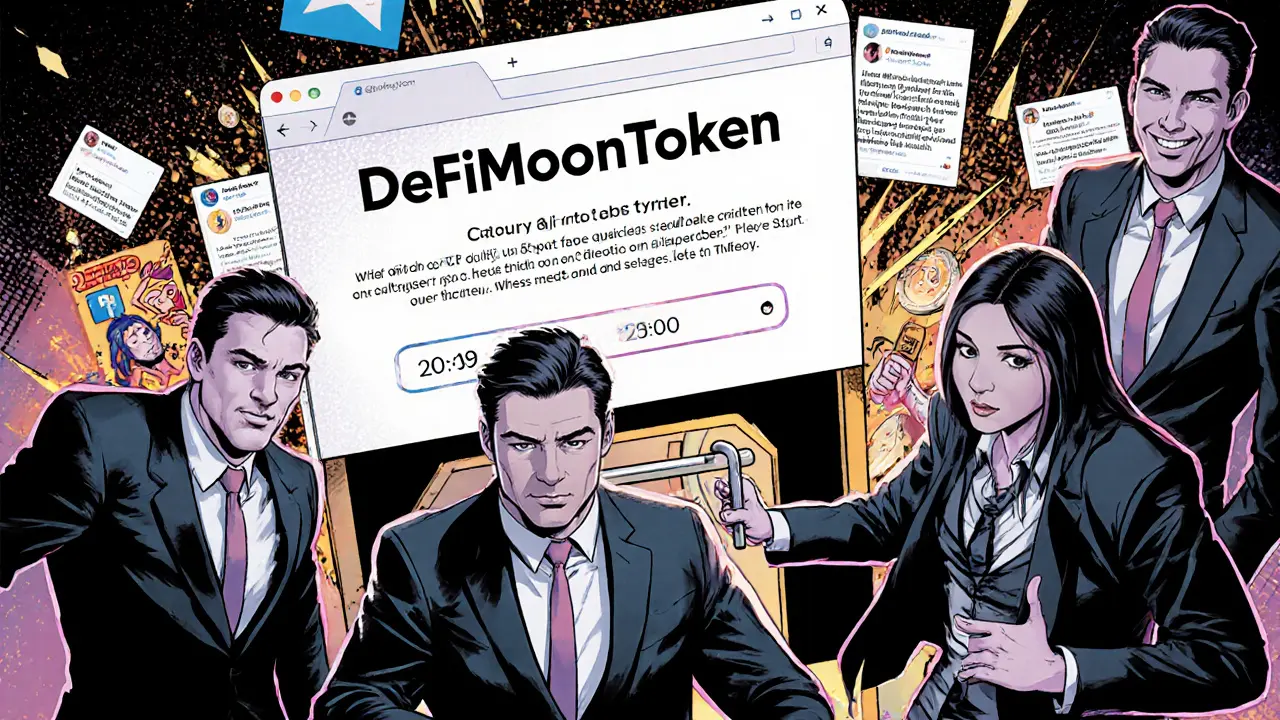
How to Protect Yourself
There’s no 100% guarantee, but you can cut your risk dramatically. Here’s a simple 5-step checklist you can do in under an hour:
- Check the team - Google every name. Look for LinkedIn profiles. Do they have a history in crypto? Or are they new to everything? If they’re anonymous, skip it.
- Verify liquidity lock - Go to Etherscan (for Ethereum) or BscScan (for BNB Chain). Find the token’s contract. Look for the liquidity pool. Is it locked? For how long? Tools like DeFiYield or Unicrypt show lock status in real time.
- Read the audit - If there’s an audit, download it. Don’t just look at the logo. Read the summary. Did they find any critical issues? If the audit says “no critical issues,” but the team has a 20% dev allocation - that’s still risky.
- Look at the tokenomics - How much is allocated to the team? To marketing? To liquidity? If the team gets more than 15%, or if over 50% of tokens are unvested, it’s a red flag.
- Watch the community - Is the Telegram group full of bots? Are people only posting “TO THE MOON!” with no real discussion? Are influencers being paid to shill? Use RugDoc.io or CoinHunters to scan for honeypots and fake volume.
One investor in Wellington saved $12,000 in March 2023 by using RugDoc.io. The tool flagged a token as a honeypot 12 hours before launch. He didn’t buy. Later, the team drained $1.8 million. He didn’t get rich. But he didn’t lose everything.
What Happens After a Rug Pull?
Once the devs vanish, the token is dead. The blockchain doesn’t lie - you can see every transaction. But recovering funds? Nearly impossible. There’s no central authority to call. No customer support. No refund policy.
Some cases get investigated. The U.S. SEC has filed 17 rug pull cases since 2022, including the $11 million Flokinomics scam. But these are rare. Most victims are retail investors - people with small amounts, scattered across the world. The cost to track them down? Higher than the money stolen.
That’s why prevention is everything. There’s no “undo” button in crypto. Once the rug is pulled, you’re on your own.

Is There Any Hope?
Yes - but it’s slow. Major exchanges are raising the bar. Binance’s Launchpad now requires a minimum 12-month liquidity lock for all listed tokens. Coinbase requires full audits. Tools like Unicrypt and RugZombie are making it easier to spot bad projects before you invest.
Even better: more projects are “doxxing” their teams - putting real names, photos, and LinkedIn profiles online. Coinbase’s data shows that doxxed projects have 89% fewer rug pulls. Why? Because if you’re real, you’re accountable.
And new standards are coming. Ethereum’s proposed ERC-7208 would force all new tokens to publicly disclose liquidity lock status. That could cut rug pulls by over 60%.
But here’s the truth: as long as crypto stays permissionless - as long as anyone can create a token with no oversight - rug pulls will exist. The goal isn’t to eliminate them. It’s to make them harder to pull off… and easier for you to avoid.
Can you recover money lost in a rug pull?
Almost never. Rug pulls are designed to be irreversible. Once liquidity is drained and tokens are sold, the money moves into wallets that are untraceable or controlled by offshore entities. Law enforcement rarely intervenes unless the amount is massive and identities are known. Most victims never get anything back. Prevention is your only real protection.
Are all new crypto projects rug pulls?
No. Thousands of legitimate projects launch every year. But the vast majority of new tokens - especially those with anonymous teams, no audits, and high APYs - are scams. The key isn’t to avoid all new projects, but to vet them rigorously. Look for doxxed teams, locked liquidity, and verified audits. If those are missing, treat it as high risk.
Do big exchanges like Coinbase or Binance list rug pull tokens?
Not anymore. Since 2022, both platforms have tightened listing rules. Coinbase requires full audits and verified team identities. Binance mandates 12-month liquidity locks. Tokens that would’ve been listed in 2021 are now blocked. That’s why most rug pulls happen on decentralized exchanges like Uniswap - where anyone can list without approval.
Is it safe to invest in tokens with locked liquidity?
Locked liquidity is a good sign - but not a guarantee. Some scammers lock liquidity for a few months, then release it just before dumping. Others lock it with a time lock but still control the contract’s admin keys. Always check the lock duration (aim for 180+ days), who controls the lock, and whether the team has a history of honesty. Locking helps - but it’s not a magic shield.
What’s the difference between a rug pull and a Ponzi scheme?
A Ponzi scheme pays old investors with money from new ones - it needs constant growth to survive. A rug pull is a single, fast exit. The team raises funds, pumps the price, then disappears. No need to keep paying anyone. Rug pulls are quicker, simpler, and more common in crypto. Ponzi schemes like BitConnect lasted years. Rug pulls often last less than two weeks.
Can AI tools detect rug pulls before they happen?
Yes - and they’re getting better. Tools like RugDoc.io and CoinHunters use AI to scan smart contracts for honeypots, unlimited minting, and hidden functions. They also track social media hype and trading patterns. In 2023, these tools flagged over 90% of major rug pulls before the exit. But they’re not perfect. False positives happen. Always combine AI tools with your own research.
Final Advice: Don’t Chase Returns. Chase Transparency.
Crypto is full of noise. Everyone’s shouting about the next 100x. But the people who keep their money? They don’t chase hype. They chase proof. They check the team. They verify the lock. They read the audit. They walk away from the shiny thing with no answers.
If you’re new to crypto, start small. Learn how to read Etherscan. Understand what liquidity means. Use free tools like RugDoc.io. Don’t invest more than you can afford to lose - because in this space, losing everything is always a possibility.
The rug pull isn’t going away. But you don’t have to be the one on the floor when it happens.
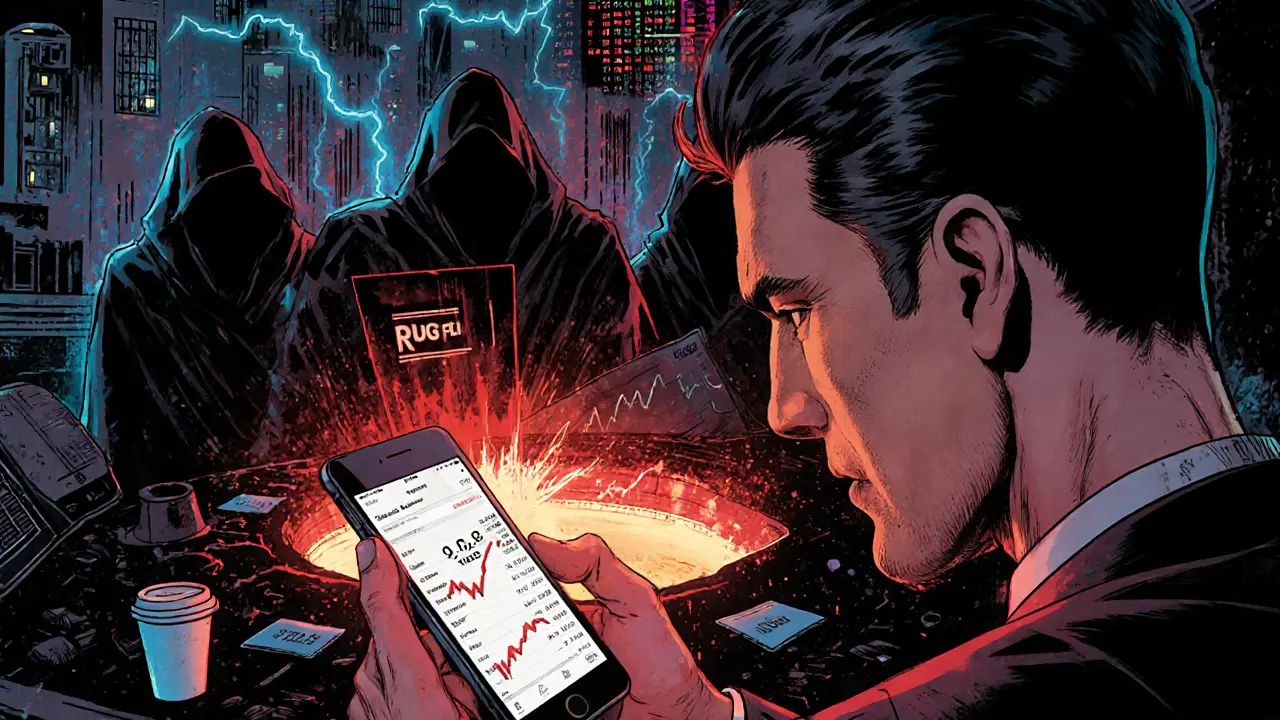

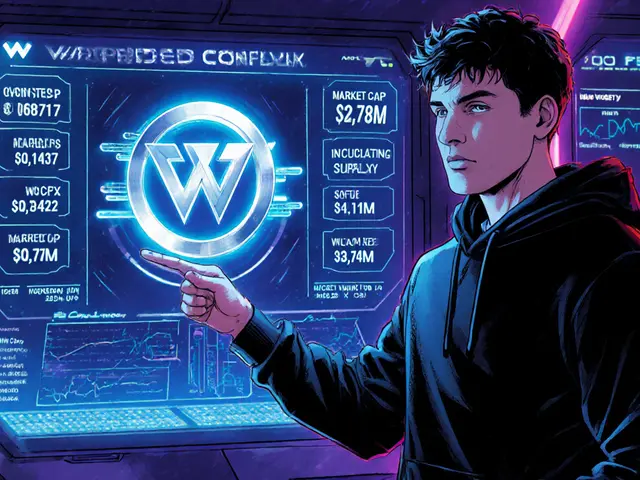
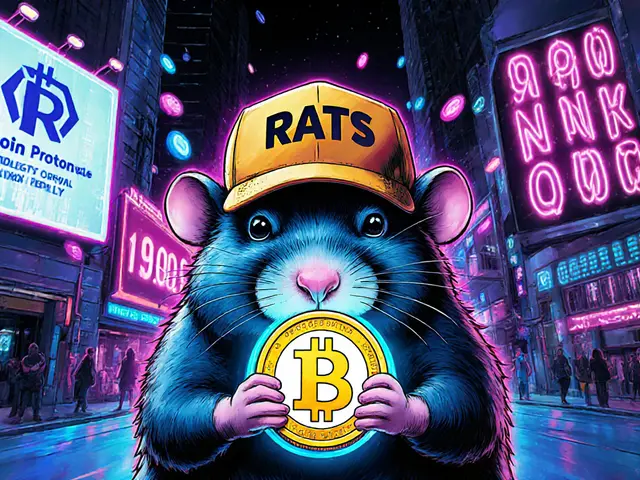

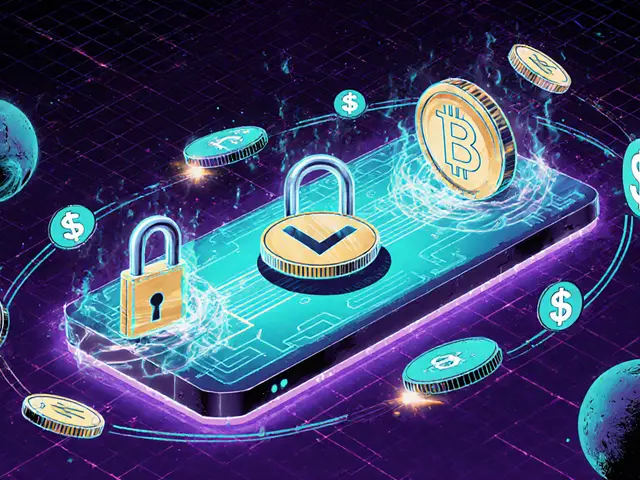
26 Comments
Wesley Grimm
November 2 2025Look, I’ve seen 12 of these in the last 6 months. The pattern’s always the same: anonymous devs, locked liquidity that expires in 72 hours, and a Telegram group full of bots posting ‘1000x’ with rocket emojis. No one’s actually analyzing the contract. Everyone’s just FOMOing into the next meme coin. It’s not even clever anymore - it’s lazy.
Masechaba Setona
November 2 2025you know what’s funny? people act like rug pulls are some new evil... but capitalism *is* the rug pull. you work your whole life, buy a house, invest in ‘stable’ assets, and then inflation eats it. crypto just makes the theft visible. at least here you know who stole it - and they’re not wearing a suit.
Kymberley Sant
November 3 2025sooo i just checked the token on bsccan and the liquidity was locked... but the dev wallet had 32% of supply?? and the audit was done by ‘SecureChain’ which is just a guy in russia who does audits for 50 bucks?? i think i almost got scammed lmao
Edgerton Trowbridge
November 4 2025It is imperative to emphasize that the structural vulnerabilities within decentralized finance stem not from technological failure, but from the absence of enforceable accountability mechanisms. The proliferation of anonymous actors, combined with the normalization of speculative investment behavior, creates an environment where predatory practices thrive. Mitigation requires systemic education, not merely individual vigilance.
Matthew Affrunti
November 5 2025Bro this is so real. I lost $800 on a token called ‘MoonBucks’ last year. No team, no audit, just a TikTok influencer with a green screen and a fake whitepaper. I felt stupid, but now I check every single thing before I click ‘approve’. You don’t have to be smart - just careful. You got this!
mark Hayes
November 6 2025locked liquidity is a start but not a cure 🤷♂️ i’ve seen projects lock for 12 months then release it right before a big pump. the real red flag is if the devs hold more than 10% and the team is anonymous. also if the website looks like it was made in 2017 with a free template… yeah. just walk away. i’ve saved myself $20k+ by doing this
Derek Hardman
November 7 2025The phenomenon of the rug pull is not merely a financial risk, but a sociological indicator of the erosion of trust in decentralized systems. When anonymity becomes the default, accountability evaporates. The solution lies not in regulation alone, but in the cultural adoption of transparency as a non-negotiable standard.
Phyllis Nordquist
November 9 2025While the article presents a comprehensive overview of rug pull mechanics, it is important to note that the majority of retail investors lack the technical literacy required to interpret Etherscan data or audit reports. Educational initiatives must be scaled alongside risk mitigation tools to prevent systemic harm. This is not a market failure - it is an education failure.
Eric Redman
November 10 2025bro this is literally just the stock market but with more drama. remember when everyone lost money on GameStop? same thing. people just don’t want to admit they got played. also, who even uses BNB Chain anymore? it’s a ghost town after the hack.
Jason Coe
November 11 2025you know what’s wild? i used to think if a project had a nice website and a video from the ‘team’ it was legit. then i found out the guy in the video was stock footage from a free site. and the ‘CTO’ had a LinkedIn that was just one post saying ‘blockchain is the future’. i lost $15k on that one. now i only invest in stuff where the devs have real names, real past projects, and they’ve been in crypto since 2017. no exceptions.
Brett Benton
November 12 2025as someone from the US who’s lived in 5 countries, i’ve seen how crypto scams work everywhere. in africa, they use WhatsApp groups. in india, they use Telegram channels with fake celebrity endorsements. in the US, it’s TikTok influencers with green screens. the scam’s the same - the delivery changes. the fix? stop trusting hype. start trusting data.
David Roberts
November 14 2025you’re all missing the point. liquidity locks are a placebo. the real vulnerability is the admin key. if the dev can still mint tokens or pause transfers after locking liquidity, it’s a honeypot. most tools don’t check that. i’ve reverse-engineered 37 contracts this year - 31 had admin control. the audit firms are complicit. they don’t test for that. they just say ‘no critical issues’ and get paid.
Monty Tran
November 15 2025rug pulls are inevitable. the system is designed to fail. decentralization means no one is responsible. no one gets jailed. no one pays back. this isn’t finance. it’s the wild west with crypto wallets. the only people who win are the ones who never invested. you’re not a victim. you’re a participant in a game rigged from the start.
Beth Devine
November 16 2025if you’re new to crypto, don’t panic. just take it slow. check one thing at a time. team? check. liquidity? check. audit? check. dev allocation? check. you don’t need to understand smart contracts. you just need to know where to look. i’ve helped 12 friends avoid rug pulls this year. you can too.
Brian McElfresh
November 17 2025you think this is about scammers? no. this is about the fed. they printed trillions and now they want you to move your money into crypto so they can track it. rug pulls? they’re just the distraction. the real game is surveillance. they want you to think you’re getting rich while they build the blockchain surveillance state. wake up. this is all controlled.
Hanna Kruizinga
November 18 2025why are we even talking about this? it’s obvious. everyone knows these projects are scams. people just want to believe. it’s not about education. it’s about greed. you don’t need to be a genius to spot a rug pull. you just need to not be desperate for a quick buck.
David James
November 20 2025i lost $500 on a token called ‘doge2’ and i felt dumb. but now i use rugdoc.io before i even click buy. it’s free. takes 2 minutes. saved me from 3 more since then. if you’re reading this and you’re about to invest in something with no team - just don’t. your future self will thank you.
Shaunn Graves
November 20 2025you people act like you’re the first to notice this. the SEC has known about this since 2020. they just don’t care because they profit from the chaos. audits are a joke. liquidity locks are theater. the entire system is a casino with fake dice. stop pretending you’re investing. you’re gambling. and the house always wins.
Kaela Coren
November 21 2025the most dangerous rug pulls are the ones that don’t look like rug pulls. they have real teams, audits, and locked liquidity. but they’re still designed to pump and dump - just slower. the real risk isn’t the malicious code. it’s the psychological manipulation. the belief that ‘this time it’s different.’
Nabil ben Salah Nasri
November 22 2025so many people miss this: the real power isn’t in the code. it’s in the community. if your Telegram group has 10k members and only 5 people are actually talking about the tech - that’s a red flag. real projects have debates. fake ones have chants. also, if the dev says ‘trust me bro’ - run. i’ve saved over $30k by just walking away from ‘trust me’ projects.
Bhavna Suri
November 23 2025why do we even bother? no one reads the audit. no one checks the lock. people just see ‘10000% APY’ and throw money. it’s not the scammers who are the problem. it’s the people who don’t care. they want to be rich overnight. they deserve to lose.
bob marley
November 23 2025lol you think you’re smart because you checked Etherscan? i’ve seen 150 rug pulls. the devs always leave a backdoor. even if the lock is real, they can still drain the contract through flash loans or hidden functions. the only safe project? the one you never heard of. the one no one’s talking about. that’s the one that’s not a scam.
Sammy Krigs
November 24 2025i just put my money in btc and eth and i sleep good. why do you guys even do this? i lost $12k on a coin called ‘shiba 2.0’ because i trusted a guy on twitter. now i just hold. simple. no stress. no audits. no team checks. just bitcoin. it’s not sexy but it works.
naveen kumar
November 25 2025the concept of decentralization is inherently incompatible with accountability. rug pulls are not anomalies - they are the logical outcome of permissionless innovation. the solution is not to regulate, but to abandon the illusion of financial freedom. true security lies in centralization - where responsibility exists. the market will never self-correct. it is designed to exploit.
Bruce Bynum
November 27 2025just check the team and the lock. if both are good, you’re ahead of 90% of investors. no need to overthink it. i’ve made more by walking away than by investing.
Jason Coe
November 28 2025bro you said it. i was just thinking the same thing. i saw a project with a real team, audit, and locked liquidity - but the dev wallet was still getting 25% of every trade as a fee. that’s not a project. that’s a tax. i didn’t buy. later, they quietly changed the fee to 30%. classic soft rug. you gotta read the fine print.